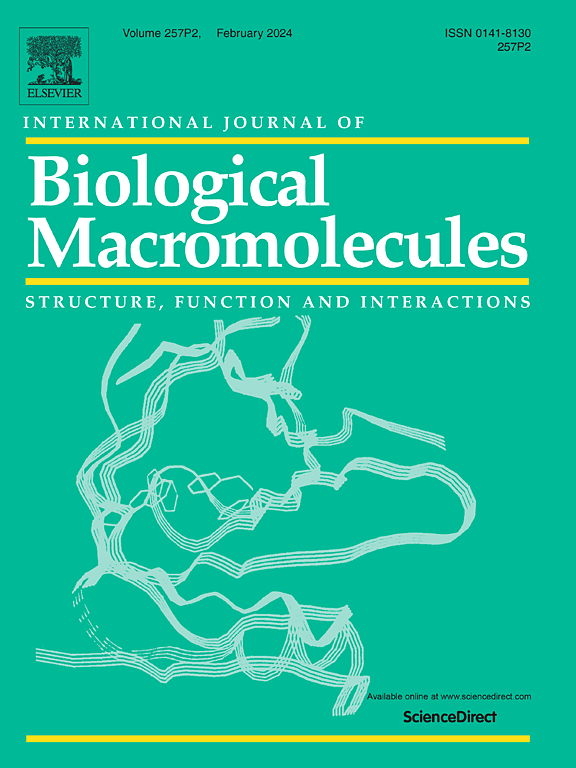Bioactive nanocellulose films by incorporation of enzymatically polymerized lignin nanoparticles
IF 7.7
1区 化学
Q1 BIOCHEMISTRY & MOLECULAR BIOLOGY
International Journal of Biological Macromolecules
Pub Date : 2025-01-19
DOI:10.1016/j.ijbiomac.2025.140051
引用次数: 0
Abstract
In the search of new bioactive and biobased films, the use of lignin nanoparticles (LNP) and cellulose nanofibers (CNF) has gained potential relevance in the last years. In this context, an enzymatic and environmentally friendly pretreatment with laccases has been proposed in this work to modify the properties of the developed cellulose-lignin nanocomposite films. Thus, the laccase treatment successfully polymerized kraft lignin as indicated by the increase in weight average molecular weight (from 3621 to 5681 Da) and the reduction in phenolic content (from 552 to 324 mg GAE/g lignin). Moreover, this polymerization also caused a significant reduction in the size of the resulting LNP (6.8 ± 2.4 nm) compared to those obtained from untreated lignin (62 ± 22 nm). The incorporation of both untreated and treated LNP conferred antioxidant, antibacterial and UV-shielding capabilities to the final LNP-CNF films, observing higher antioxidant and UV-shielding values with polymerized LNP probably due to its tiny size and conjugated functional groups, respectively. Furthermore, films with 5 % LNP also showed better thermal stability, elongation at break, water vapor permeability and transparency, compared to CNF control films.
通过酶聚合木质素纳米颗粒掺入生物活性纳米纤维素膜。
在寻找新的生物活性和生物基薄膜的过程中,木质素纳米颗粒(LNP)和纤维素纳米纤维(CNF)的使用在过去几年中获得了潜在的相关性。在此背景下,本研究提出了一种酶促和环境友好的漆酶预处理方法来修饰所开发的纤维素-木质素纳米复合膜的性能。因此,漆酶处理成功地聚合了硫酸盐木质素,其重量平均分子量增加(从3621到5681 Da),苯酚含量减少(从552到324 mg GAE/g木质素)。此外,与未经处理的木质素(62 ± 22 nm)相比,这种聚合也导致所得LNP的尺寸显著减小(6.8 ± 2.4 nm)。未处理和处理LNP的掺入均赋予最终LNP- cnf膜抗氧化、抗菌和屏蔽紫外线的能力,观察到聚合LNP具有更高的抗氧化和屏蔽紫外线的价值,这可能是由于其微小的尺寸和共轭官能团。此外,与CNF对照膜相比,5 % LNP的膜也表现出更好的热稳定性、断裂伸长率、水蒸气渗透性和透明度。
本文章由计算机程序翻译,如有差异,请以英文原文为准。
求助全文
约1分钟内获得全文
求助全文
来源期刊
CiteScore
13.70
自引率
9.80%
发文量
2728
审稿时长
64 days
期刊介绍:
The International Journal of Biological Macromolecules is a well-established international journal dedicated to research on the chemical and biological aspects of natural macromolecules. Focusing on proteins, macromolecular carbohydrates, glycoproteins, proteoglycans, lignins, biological poly-acids, and nucleic acids, the journal presents the latest findings in molecular structure, properties, biological activities, interactions, modifications, and functional properties. Papers must offer new and novel insights, encompassing related model systems, structural conformational studies, theoretical developments, and analytical techniques. Each paper is required to primarily focus on at least one named biological macromolecule, reflected in the title, abstract, and text.

 求助内容:
求助内容: 应助结果提醒方式:
应助结果提醒方式:


